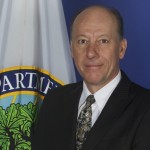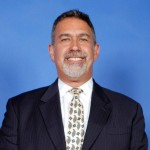This blog was cross posted from HOMEROOM, the official ED.gov Blog, and originally appeared on Medium.
Last year I learned about Jade, a dynamic 8th grader who struggled to learn to read when she was in elementary school.
In recalling her challenges, Jade described trouble recognizing letters and difficulty linking them together to form sounds. She just couldn’t read. The worst feeling in the world, Jade said, was starting to believe the names her classmates called her.
For a long time Jade kept her struggle to herself, feeling alone, and like she had to find her own way to deal and cope with this challenge. Fortunately, Jade’s family and teachers stepped in to help her get special education services. These services provided her with individualized strategies to help her read—strategies that she still uses today as she advances through middle school and sets her sights on high school and beyond.
We know that Jade is not alone. Approximately 2.5 million students receiving special education services in schools have learning disabilities, making it the largest disability population in our country. And, while research demonstrates that learners with disabilities who struggle in reading or math can most certainly succeed at rigorous, grade-level coursework with high-quality instruction and appropriate services and accommodations, too many young people don’t get the support they need to succeed. Sadly, and unnecessarily, students with learning disabilities lag far behind their peers in a host of academic indicators.
Too often, children with learning and attention issues are defined by their limitations rather than their strengths. Jade’s story shows us what is possible when educators and families work together to build on the strengths of a child while identifying and addressing their challenges.
By raising awareness of the needs of children with learning and attention issues, we can all make certain that no child falls through the cracks.
That’s why I am proud to highlight October as the month of awareness for Learning Disabilities, Dyslexia, and Attention Deficit Hyperactivity Disorder (ADHD). By raising awareness of the needs of children with learning and attention issues, we can all make certain that no child falls through the cracks.
Today, the Office of Special Education and Rehabilitative Services (OSERS) released guidance to state and local educational agencies. This guidance clarifies that students with specific learning disabilities—such as dyslexia, dyscalculia, and dysgraphia—have unique educational needs. It further clarifies that there is nothing in the federal Individuals with Disabilities Education Act (IDEA) that would prohibit the use of the terms dyslexia, dyscalculia, and dysgraphia in a student’s evaluation, determination of eligibility for special education and related services, or in developing the student’s individualized education program (IEP).
It is our hope that this guidance will help families and educators work together on behalf of children. We acknowledge that there could be situations in which the child’s parents and the team of qualified professionals responsible for determining whether the child has a specific learning disability would find it helpful to include information about the specific condition (e.g., dyslexia, dyscalculia, or dysgraphia) in documenting how that condition relates to the child’s eligibility determination. Additionally, there could be situations where an IEP team could determine that personnel responsible for IEP implementation would need to know about the condition underlying the child’s disability (e.g., that a child has a weakness in decoding skills as a result of the child’s dyslexia).
Specifically, this guidance:
- Clarifies that the list of conditions in the definition of “specific learning disability,” which includes dyslexia, is not an exhaustive list of conditions which may qualify a child as a student with a learning disability;
- Reminds States of the importance of addressing the unique educational needs of children with specific learning disabilities resulting from dyslexia, dyscalculia, and dysgraphia during IEP Team meetings and other meetings with parents under IDEA;
- Encourages States to review their policies, procedures, and practices to ensure that they do not prohibit the use of the terms dyslexia, dyscalculia, and dysgraphia in evaluations, eligibility, and IEP documents.
This guidance can be found by visiting the Department of Education’s webpage.
The Department is committed to ensuring students with specific learning disabilities—such as dyslexia, dyscalculia, and dysgraphia—receive a high-quality education. The month of October is as an opportunity to raise awareness about these critical issues. But we all must remember that helping students, like Jade, to thrive happens not just today, but every day.


